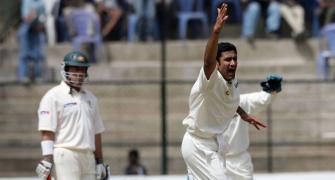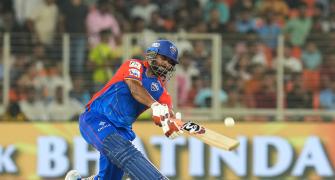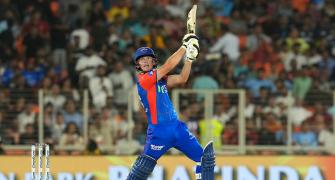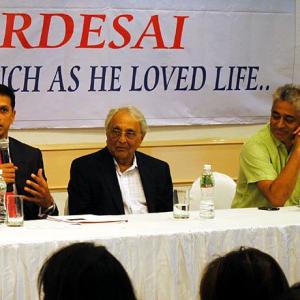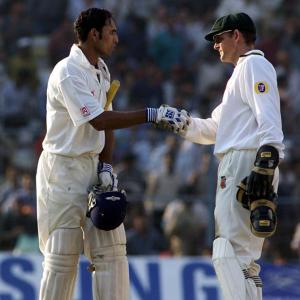'If fame, money and comfort are the only factors that drive us, then we are playing cricket for entirely the wrong reasons.'
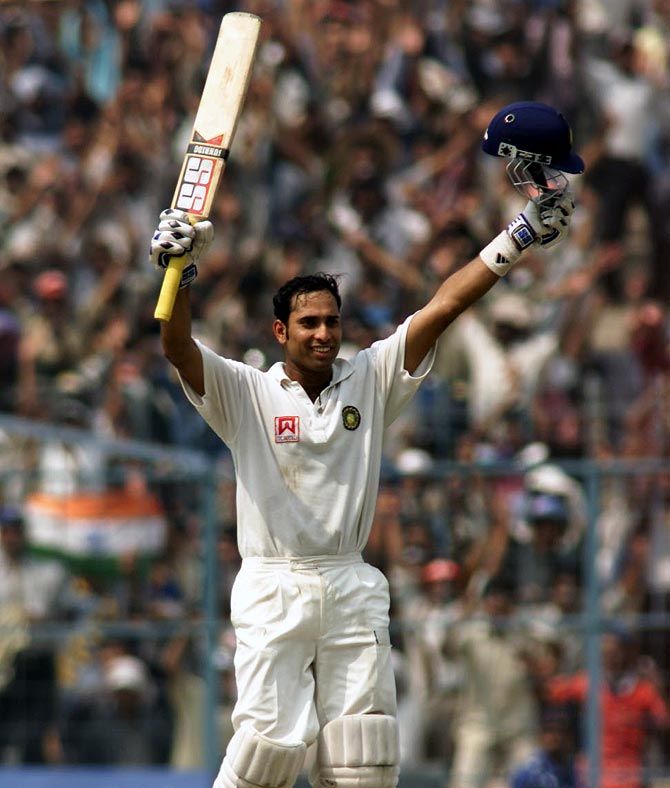
V V S Laxman, one of India's finest batsmen, delivered the eighth Dilip Sardesai Memorial Lecture at the Cricket Club of India on Thursday, September 29, 2016.
A Very Very Special cricketer's fascinating insights on the game.
I remember my interactions with Mr Sardesai like they were yesterday. I didn't have the good fortune of meeting him too often, but when I did meet him for the first time in 1998 with (the legendary M L) Jaisimha Sir as the coach of the Hyderabad Ranji Trophy team, the one thing that struck me immediately was his infectious enthusiasm.
Mr Sardesai had come to meet Jaisimha Sir at the Panjim Gymkhana, and it was a reunion that took my breath away.
There was a constant buzz as the two legends chatted and laughed and exchanged anecdotes. What seized my mind was how positive, energetic and fun their talks were.
There was no bitter memory, and no unsavoury episode was recalled. It offered me a whole new perspective about what the game meant to these individuals, and what lessons someone like me, in the early stages of my international career, could imbibe.
There are things that we tend to take for granted. Like decent infrastructure. Like good practice facilities. Like flying in good airlines and being picked up and dropped off. Like excellent accommodation. Like top-quality cricketing gear. And yet, for some reason or the other, this doesn't seem like it is enough.
We always talk about what is not there, instead of being grateful for what is.
As I followed the conversation between Mr Sardesai and Jaisimha Sir closely, as the conversation moved from the ground to our hotel which wasn't far from the ground, what became increasingly clear to me was how much these two gentlemen not just enjoyed each other's company, but how much they were still in love with the game, after all these years and well beyond retirement.
It reminded me why we all play the game -- for the sheer love, for the enjoyment it brings to us, for the camaraderie and the spirit of oneness it instills in a varied set of people.
Fame, money and comfort will be inevitable by-products, especially in this era where for instant success, almost instant reward is guaranteed, but if fame, money and comfort are the only factors that drive us, then we are playing cricket for entirely the wrong reasons.
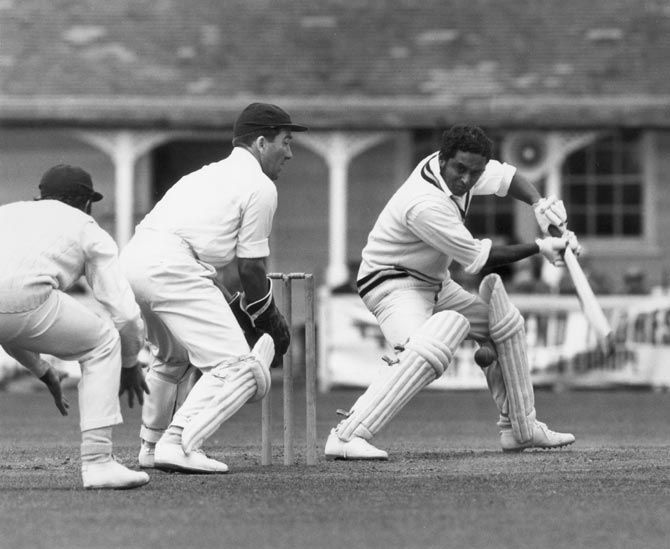
Don't get me wrong, I am not saying money isn't important. Everyone wants to lead a good life, as everyone should, but we must not lose sight of what it is that, is dearest to the heart.
During his successful tour to the West Indies in 1971, I understand Mr Sardesai was asked at the airport whether he had anything to declare. 'I have come here with runs,' he replied, 'and I'll go back with more.'
As a batsman I guess that's what it is that we need to accumulate.
When I started playing cricket as a young boy in my neighborhood, I didn't think about bank balance, luxury cars and a big house.
Cricket was a way of life, and over the years, it has continued to remain a way of life, occasionally eclipsing life itself.
We are beginning to take the good things for granted, like it is our due, and we tend to focus so much on the negatives that we forget that the positives ledger is far more weighty.
From Mr Sardesai and Jaisimha Sir that day, I gleaned a valuable learning -- respect what you have, don't forget to have fun, and learn to be happy without necessarily being satisfied.
These were to help me immensely in a journey that I have enjoyed every step of the way, through the ups and the downs which help you appreciate the ups even more.
I, obviously, haven't seen Mr Sardesai bat, but I have heard plenty from players from earlier generations who have played with and against him.
They say a picture is worth a thousand words, yes, very true, his famous photograph playing the late cut speaks volumes about his batting skills and style.
The word 'wristy' has also often come into the equation and it has always brought a humble smile to my lips. I have found one tangible connection with Mr Sardesai, and for that, I am grateful.
Mr Sardesai had a wonderful tour of the West Indies in 1971 when he made upwards of 600 runs including his highest Test score -- 212 in the first Test at Sabina Park.
He followed it up with 112 in the next game in Port of Spain when Jack Noreiga took nine wickets, but could not prevent India from notching up a famous Test win in the Caribbean on their way to their first series triumph in the land of pace and steepling bounce.
He made 150 in the fourth Test in Bridgetown with India 70 for six in reply to the West Indies' 501 for five declared, a six-hour innings that allowed the team to escape with a draw.
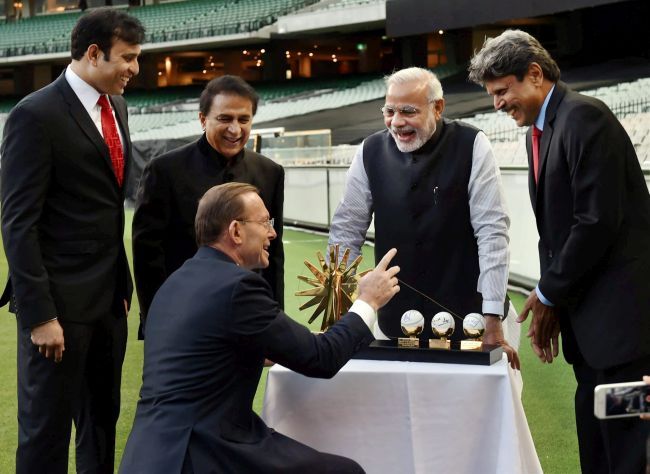
Ninety-nine times out of 100, Mr Sardesai would have unquestionably walked away with the individual batting honours, but this was the tour in which Sunil Gavaskar announced his arrival in international cricket.
Despite missing the first Test, Sunny bhai finished with 774 series runs at a staggering average of 154.80, capping off a wonderful run with 124 and 220 in the final Test at the Queen's Park Oval.
Mr Sardesai himself was only 30, but he was upstaged as far as numbers were concerned by the 21-year-old phenom. However, the value of his runs were truly cherished by the team as much as Sunny bhai's were.
On the following tour to England, Mr Sardesai scored 54 and 40 in another famous triumph at the Oval in London rounded off by B S Chandrasekhar's six for 38 that gave India a four-wicket victory and their first series win in England.
In the matter of six months in 1971, under Ajit Wadekar, India had won Test series in West Indies and England.
We were to replicate that feat more than four-and-a-half decades later, under Rahul Dravid, though the gap between the series win in the West Indies (2006) and England (2007) was closer to 14 months.
Mr Sardesai played only one further Test after the Oval victory, but long before that, he had firmly entrenched himself in the history books. I have heard of how masterful he was in defence, but when the mood seized him like it did against New Zealand at the (Feroz Shah) Kotla in 1965, he could also take the attack to the bowling.
In an era where time at the crease was the yardstick rather than balls faced, opening the batting, Mr Sardesai smashed 18 fours in making 106 in under two-and-a-half hours. That was proof enough of his versatility and his ability to take command of situations.
Importantly, Mr Sardesai was known to be a picture of valour because he took on the best of fast bowlers without helmet. He was technically correct and came from the Bombay school of cricket where batsman put tremendous value to their wicket.
He was an excellent player of spin bowling and loved using his feet to put pressure on them and for this approach he was immensely respected by the famous Indian spin quartet.
It is said that nothing perturbed him at the crease. He loved being a cricketer and that explains his unflinching desire to serve the team. He reserved his best for difficult circumstances and excelled when the rest struggled.
He was one of the architects of India's rise in international cricket.
I earlier spoke of the 'wristy' thread with Mr Sardesai. A more tangible connection is in the form of Sunny bhai, whose debut Test series came under the watchful guidance of Mr Sardesai in the Caribbean.
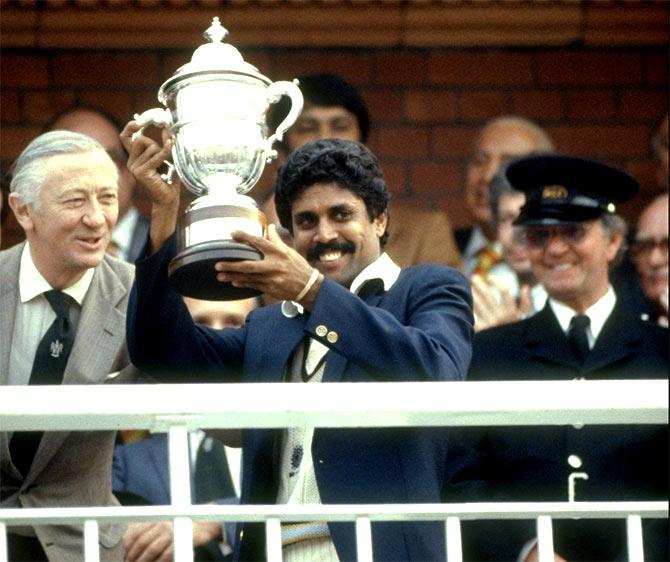
As kids, we used to play the game of bat-and-ball with gusto in our Hyderabad neighborhood, but my real interest in the game was stoked during the wonderful run of the Indian cricket team in the 1983 World Cup under Kapil Dev.
Inspired by the deeds of the team which didn't exactly enter the tournament as favorites but surprised everyone by embarking on a memorable journey to the Lord's balcony that fateful June 25th evening, cricket suddenly became all-encompassing.
It was the 1983 World Cup that first brought live television pictures to our household, and it is fair to say that I was hooked to the game for life.
I was no more than eight-and -a-half years old at that time, and it was no surprise that I wanted to be Sunil Gavaskar, I wanted to be Kapil Dev.
In our battles in the gullies, I would alternately be one or the other, but my friends used to call me Little Gavaskar because I was not only short at that age and had a solid technique, but also because they found it very difficult to get me out.
I am not sure what Sunny bhai thinks of this, but as a little boy, I got a massive kick out of being spoken of in the same breath as one of my heroes!
Gradually, the cricket bug entered deeper and deeper into my system until it became a passion, but never a dangerous obsession.

I was madly in love with the game, I wanted to play at every possible opportunity, but given the background from which I came, cricket was never at the expense of education.
Having managed to balance cricket and education nicely, I had always been a pretty decent student, but by the time I turned 17, I had a huge decision to make.
I came through the entrance exam and gained admission to one of the more famous medical colleges in Hyderabad, but I had to decide whether to pursue my dream of playing cricket for the country, or follow my parents' lead by becoming a doctor like them.
For any 17 year old, it is not an easy decision to make, especially when it isn't necessarily in your hands to see your dream come to its logical fruition.
Fortunately for me, I had the perfect support system around me. My parents allowed me to make my decision and backed me. I was equally fortunate to have a mentor in my maternal uncle who encouraged and pushed my cause.
It is vitally important to have the right people in your lives, and as I look back, I realise how lucky I was in that regard.
While my parents were my pillars of strength, it was my uncle who recognised the talent in me, and who made sure that he put me under the tutelage of the right coaches. He constantly monitored my progress, not so much in terms of how many runs I was making, as to how much I was improving as a player.
He was the one I turned to even when I had to discuss certain technical aspects, though I can't overstate the role several of the coaches played in shaping my destiny at the St John's Cricket Academy.
These are the essentials for any aspiring sportsperson to be blessed with, in your late teens. You are at an age where there can be distractions, and you aren't obviously mature enough to make the right call all the time.
That's when the parents, a mentor and your coaches need to embrace your ambition, and give it shape and direction.
Behind every success story in sport, there is a solid, dependable, committed core group. I can vouch for that from experience.
My brother and I were also fortunate in other ways. Our paternal grandfather was a Bhagvad Gita teacher, and so it was almost a given that very early in our lives, we would recite the shlokas from the Bhagvad Gita.
As I grew in years, I realised the true import of those shlokas, and I increasingly found myself in a position where I could practice my learnings.
From reasonably early in my life, I was a big follower of my inner voice.
I did that when I had to choose between cricket and a degree in medicine.
I did so when, in 2000, I decided that I would rather not open for India in Tests even though there was no spot in the Indian middle order, and I again did so in 2012 when I announced my retirement from international cricket.
At 17, my inner voice dictated me that I embark on the journey of becoming the best cricketer that I could be.
As I reflected on that, I came to the conclusion that 10 years hence, I didn't want to regret not having given it my all in my pursuit of cricketing excellence, in my pursuit of playing for the country.
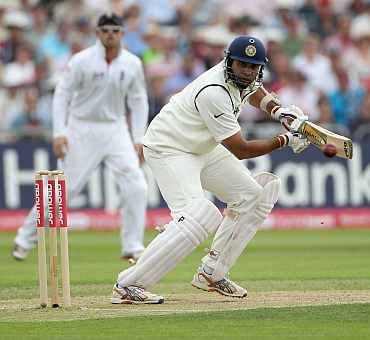
My parents recognised that passion, but they were also realistic enough to set a time frame. I had until 22 to make it to international cricket, which meant five years to translate my dream into reality.
If I didn't do so by then, it was back to education, to a degree in medicine to start with, and to serve the people with a stethoscope rather than the nation with a cricket bat.
'I did that when I had to choose between cricket and a degree in medicine.'
'I did so when, in 2000, I decided that I would rather not open for India in Tests even though there was no spot in the Indian middle order, and I again did so in 2012 when I announced my retirement from international cricket.'
As I climbed the rungs and made it to the Hyderabad Ranji Trophy team when still 18, I understood that these were baby steps towards the top.
When I was not playing matches, I spent hours practising, at the St John's Cricket Academy which was adjacent to my grandparents' house in Secunderabad.
I was aware of the passage of time, but I was not worried that time might be passing me by. Was I anxious that by the time I reached 22, I would not have made the Indian team and therefore would have to abandon one dream to follow another? I can tell you all with complete honesty -- I was not.
Having understood the teachings in the Gita, I derived inspiration from Chapter 12, Bhakti Yoga, which talks among other things of doing one's best, surrendering oneself and not worrying about the fruits of actions.
It also reiterates the importance of being equanimous in victory and defeat. Those teachings were to remain with me for the rest of my cricketing career, and beyond.
I, therefore, came to terms with that fact that I could not influence my selection one way or the other, apart from, by scoring runs, and lots of them.
Now, that was not in my control, because there is no guarantee that you will score runs, no matter how gifted or talented you might be.
The only thing that was in my control was the dedication, the effort, the commitment, the hard work, and the labour.
So I immersed myself fully in cricket. It was fun because it was something I wanted to do.
My parents had empowered me by allowing me to follow my heart, and therefore now, I was totally and entirely responsible for my actions.
I left no stone unturned in giving my heart and soul to cricket. What happened after that wasn't something that I had a say over.
The more you think about it, the more you realise that the origins of several of today's mantras lie in the scriptures.
Especially from a cricketing perspective, we talk about focussing on the process and not worrying about the result.
About how if we do the processes right, the results will take care of themselves.
That's precisely what the Gita says -- do your duty, but not with an eye on the outcome.
Effectively, it means the only thing that is in your hands is the effort. That is what drove me -- the desire not to leave anything behind when it came to effort.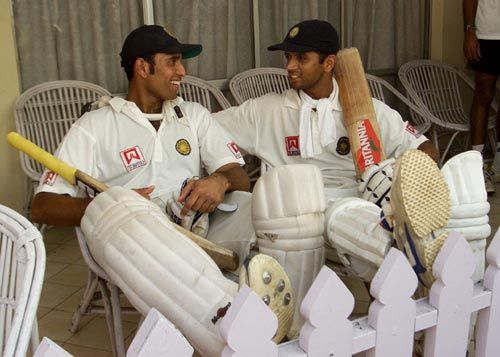
Once that was sorted in my mind, the path ahead was clear.
Focus on your cricket.
Focus on what is in your control.
Focus on giving it your all, day in and day out.
And don't ever look at it as a chore.
This is the path you have chosen, you will be letting not just yourself down if you don't plunge into it with soul and spirit, but you will also be letting down those around you who have backed you, supported you, encouraged you and stood by you.
Again, from this realisation came the understanding that your outlook should not be shaped by runs, or the lack of them.
You didn't become a different person overnight just because you have one big score, or you didn't become a lesser person because you failed.
There are great lessons to learn in success, but bigger ones to imbibe when success is elusive.
Ultimately, your character cannot change according to the outcome; you are what you are as a person, and your legacy as a human being doesn't depend on the results you produce.
That is not to say that I was indifferent towards success or failure. It affected me as it affects every human being, but you must learn to control and rein in your emotions, not allow yourself to be ruled by them.
Even though I made runs at the Under-19 level, and for Hyderabad in the Ranji Trophy, I still didn't believe I would play for India.
It wasn't as if I was racked by self-doubt, but I wasn't sure that I was ready just then to break into the big league. My uncle was convinced I was ready, and he made no secret of that fact, but I wasn't so sure.
Then came a burst between February and September 1994, two Under-19 'Test' series at home against Australia and then away to England, and the landscape changed entirely.
During those two Test series, our coach was Sandeep Patil. Sandy bhai was another of my heroes growing up for his swagger and his style, as well as for his fearless approach and the brand of entertainment he brought with him.
His century in Australia, one Test after being knocked out by a Len Pascoe bouncer, is the stuff of legend, and to have him in our dressing room, helping us out with his inputs and his expertise, was just brilliant for us teenagers.
The Australian Under-19 team had a particularly strong bowling attack -- Matt Nicholson, Brett Lee, Jason Gillespie and Andrew Symonds, all of whom went on to represent their national team with distinction.
I made three half-centuries and an unbeaten 151 in six innings, and then made 119 in the first Test in England a few months later.
By the time we went to England, the self-doubts had begun to dissipate. I felt I was more and more comfortable with where I was as a batsman, and the century in England gave me the confidence that I could perform in alien conditions against good attacks.
The evenings spent with Sandy bhai will always remain fresh in my memory. We were already in awe of him, and as he recounted his journey, including that World Cup victory in 1983 that really was the clincher for me so far as a career in cricket was concerned, we just couldn't have enough of him.
Many of us would congregate in Sandy bhai's room at the end of each day's play or after a practice session, and he would educate us on the preparatory routines of his legendary team-mates and himself, of their plans and discussions before and during matches.
Sandy bhai would tell us how much wearing the India cap meant to him, and what it was like to be a part of a dressing room full of superstars who also were pranksters.
All that was real gold for us. On a personal level, it just steeled my resolve further. By now, with runs against quality attacks under my belt, I felt more assured and confident.
At the end of the England tour, Sandy bhai told the media that Laxman was ready to play for India. I can't really translate into words what emotions those words triggered in me.
Sandeep Patil, my coach and one of my idols, not just thought I was good enough to play for the country, he was happy to let the whole world know it.
For a while, I was walking on air. Then dawned the realisation that Sandy bhai was one more person who I shouldn't let down.
It is sometimes important to remember how the journey unfolded more than just what happened at the end of the journey.
Whatever I am is because of cricket; it has forever been more than just a job or a profession, and that is something that applies to all walks of life.
Whatever we do, we need to do with total dedication and complete devotion.
At every stage of our life, we need strong value and support systems, guides and parents and mentors, role models to look up to, and a clarity of vision that will allow us to home in on our goals without taking short-cuts.
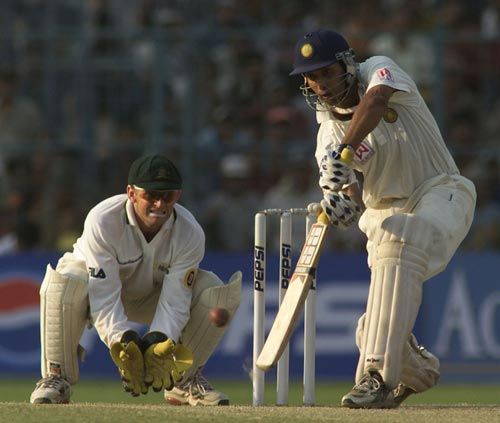
When I did finally make it to the Indian team in 1996, I didn't feel that it was mission complete, dream accomplished.
The aspiration to play Test cricket was not just to be known as a Test cricketer, it was to try and contribute to the team's success.
It wasn't so much about how many runs you made as about when you made them, in what situations you made them.
Sometimes, a combative 30 is as crucial as a magical 281.
But at the end of the day, as a team player, you end up with an empty feeling when you have made a hundred but your side is on the losing side.
The individual always, always comes after the team, which is why when you learn to enjoy each other's successes, the joy that permeates through the dressing room can more than compensate for the disappointment that might stem from an individual setback.
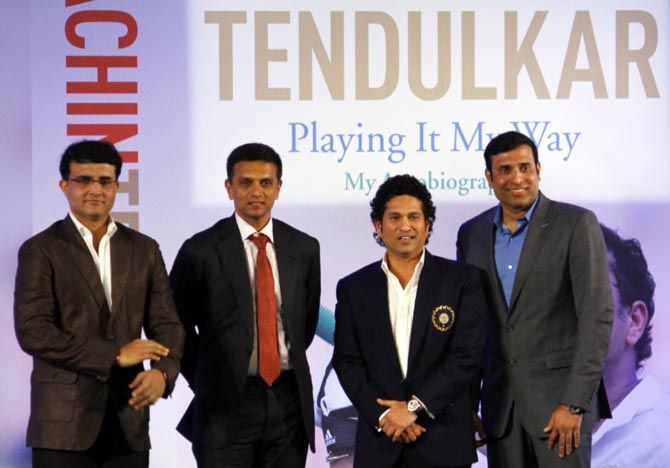
Once we got into the 2000s, the teams that I was a part of were all determined to push their boundaries overseas, and particularly outside the sub-continent.
It wasn't as if we took victory in India for granted; they also came after a great deal of effort but it was in our backyard, in conditions we were familiar with.
Within the team, the growing urge to become more competitive overseas came with the arrival in our coaching set-up of John Wright, the first overseas coach of our national side.
John was laidback, but he was also very demanding because he believed we had what it took in terms of talent, mental fortitude, temperament and resolve to be a strong force outside our shores too.
All he needed to do was stoke our ambition and hunger, and John did a fantastic job of that.
In my early days, we were slightly unsuccessful travellers to Australia and England, to West Indies and New Zealand and South Africa, but when we bought into the concept of the importance of doing well on foreign land, we were at once excited and pumped up.
After the Kolkata Test in 2001 against Australia, we believed as a unit that we could bounce back from any situation, against any opposition, in any conditions.
This strong self-belief and the desire to challenge ourselves against the best in their own backyard helped us become better players and competitors as we raised our level of play, and began to notch up Test wins abroad with greater consistency.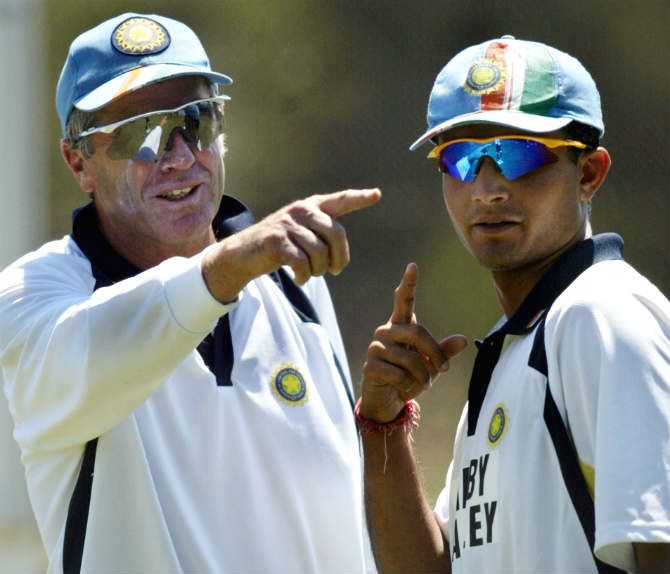
It, of course, helped that we had a team that was capable of holding its own anywhere. The glittering array of talent was now married to steely resolve.
Sourav (Ganguly) and John galvanised us into bettering ourselves as travellers. I am sure Mr Sardesai, having been part of stirring overseas triumphs himself, would have thoroughly enjoyed our exploits in different parts of the globe from 2002 onwards.
When you travel abroad, you are confronted with situations that you aren't familiar with, with challenges that test your character.
In that sense, Test cricket away from home is a lot like life itself. There will be moments when you need to dig deep, when you find yourself out of your comfort zone.
It is how you react and adapt to these challenges that shapes your life. Similarly, it's about how you tackle the myriad mystiques of Test cricket in alien lands that shape your cricketing outline.
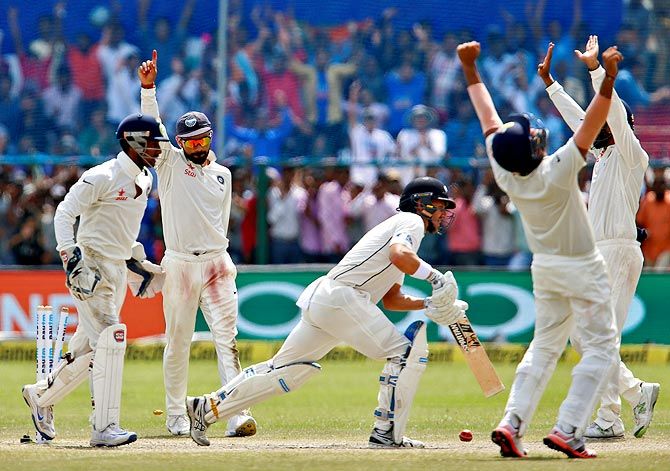
I can't say just how delighted I am that we are just about at the beginning of an exciting, entertaining and packed season of home Test matches.
While as cricketers we enjoy every format, no format throws up the kind of challenges that Test cricket does, over five days with the overhead and pitch conditions as well as the condition of the ball changing with the passage of time.
It requires you to be on full alert for the duration of the game, especially in the sub-continent where the game might appear to be drifting for three-and-a-half days and then dramatically, without warning, springs to life in a 45-minute burst.
The Twenty20 version is a wonderful addition to our rich game, a concept that has revolutionised not just strokeplay and bowling and fielding standards, but also our attitude, approach and mindset.
There is no scope for meekness or fear in the 20-over shootout; if you blink, you will come out second best. This attitude has gradually worked its way into the longer formats, and consequently, the aggression has led to a profusion of results in Test matches where earlier, draws were fairly common.
There was a time when a run-rate of 2.5 to 2.6 an over for the duration of a day's play was the norm in Test cricket. There was an onus on preservation of one's wicket rather than an eye on the score board.
Gradually, as 50-over cricket took deep root, the run-rates began to increase. Suddenly 3 and 3.25 an over wasn't rare, but it was under Steve Waugh that Australia raised the bar really high, targeting and often maintaining a rate of 4 to the over.
It meant that not only was there value for time spent in the middle, it also gave the bowlers enough time and opportunity to get the wickets required to lead the charge for victory.
No matter how many runs you put on the board, you need the wickets to emerge victorious.
So as a batsman, you increasingly began to feel that the quicker and bigger you made your runs, the greater chance of you ending up on the winning side.
It is no surprise that so many matches are ending decisively these days, and sometimes well within the distance, which brings us to the big question of whether the quality of defensive batsmanship has suffered over the years.
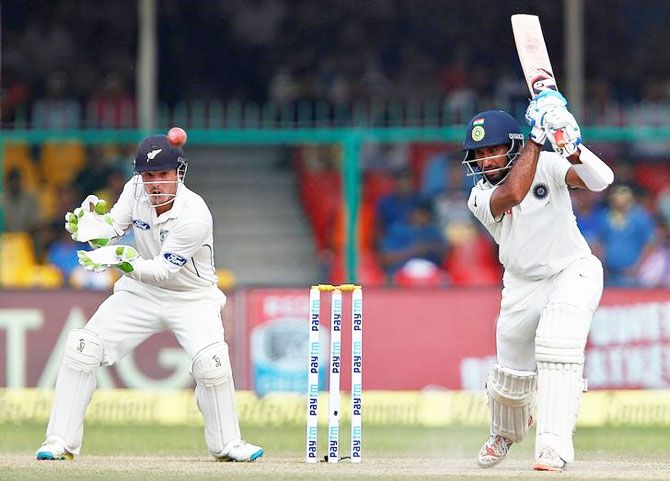
It's a tricky topic, one that really doesn't have a straightforward answer, and I don't say it with tact, diplomacy or political correctness in mind.
How can you compare eras?
How do you judge the value of an innings of say 40 on an uncovered track in an age of no helmets against a 31-ball hundred in the current conditions?
Who can say with any degree of certainty that this innings has greater import than that?
All we can agree on is that the approach to batsmanship has changed.
There is a greater emphasis on run-making as compared to occupation of the crease.
But despite that, there are the Dravids and the Pujaras who have the temperament and technique to bat like walls and are equipped to bat time, and display big hearts when their backs are against the wall.
With New Zealand currently in India, and England, Bangladesh and Australia all set to travel here in the next six months, it is time to buckle up and partake of what I am sure will be unalloyed entertainment.
The fact that we have 13 Tests at home, and that these will all be played at different venues including six grounds that will be making their Test debut, is a wonderful development that should play a huge part in driving fans to the ground in large numbers.
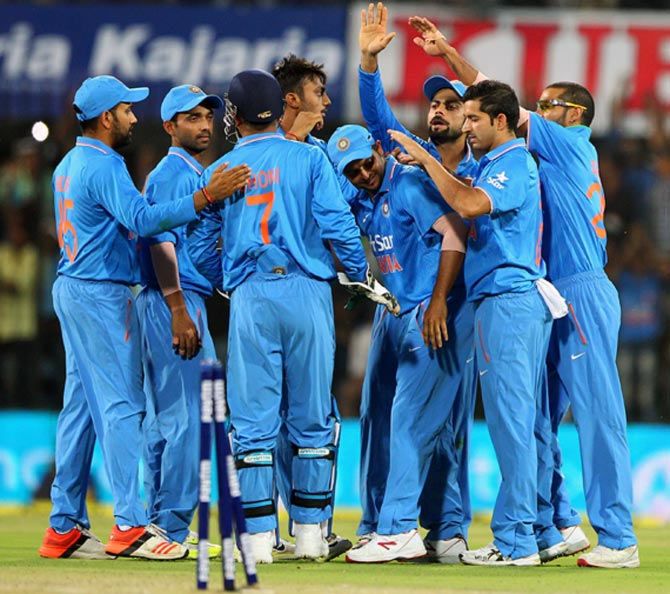
I am of firm conviction that we should do whatever is within our reach to ensure that Test cricket is popular and well patronised. Towards that end, taking Test cricket to newer, some would say smaller, places is a brilliant move by the BCCI.
Admittedly, this move shouldn't just be a populist one; the new grounds must have excellent infrastructure, the cities must have top class hotels, there should be no compromise on quality.
And, we will all agree, I am sure, that our new Test centres -- Indore, Rajkot, Visakhapatnam, Dharamsala, Ranchi and Pune -- meet these requirements.
All these centres have already staged international cricket successfully, though those matches have been of the limited-overs format.
Now afforded the opportunity to watching India's top stars in white clothing, I am confident they will turn out in thousands to voice their support and encouragement to Virat Kohli and his team, recently temporarily having occupied the No 1 position in Test cricket and certain to regain that spot in the near future.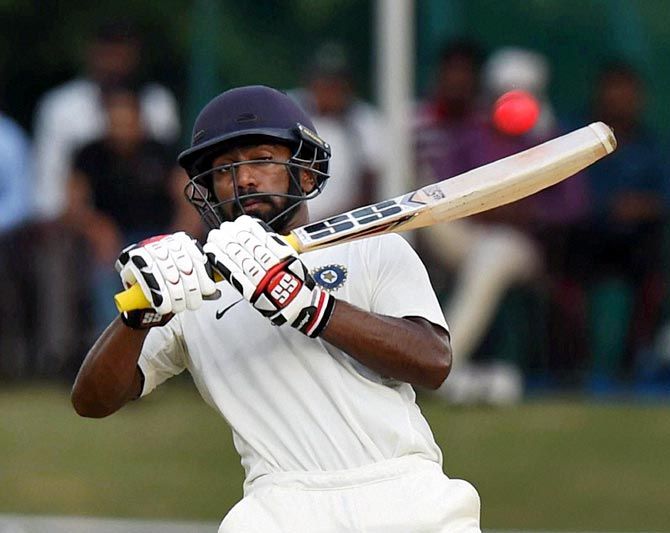
I am also convinced that day-night Tests are the way forward. I must hasten to add that day-night first-class cricket is still work in progress.
There are plenty of issues that need to be addressed, especially in India where cricket is a winter sport.
How do we tackle the dew, for instance?
How do we maintain the balance between bat and ball?
How do we also ensure that we don't compromise on our traditional strength, which is spin?
These are all questions that need to be answered with conviction before we embrace day-night Test matches in totality, but we must do anything we can to bring people to the ground to watch Test matches without compromising on the basic fibre of the sport.
The turnouts at the Adelaide pink-ball Test last year between Australia and New Zealand, as well as during the recently concluded Duleep Trophy in Greater Noida, are a shot in the arm for playing the longer version under lights.
It gives people the opportunity of coming to the cricket after a day at work, and if that opportunity can be allied to quality fare and amenities that the fans will enjoy, I am certain we will have a winning product.
Virat has established himself as one, both for the present and for the future. His exploits in all formats of the game have been exceptional, and starting with four centuries on the Test tour of Australia in 2014-2015, he has already reached a level that many people strive for years to attain.
As impressive as his form has been in the 50-over and Twenty20 formats, I think his wonderful run in Test cricket, despite the additional responsibility of captaining the team following M S Dhoni's retirement, is just the tonic the current generation of young kids aspiring to make it big requires.
It was under MS that India first climbed to the No 1 position in the ICC Test rankings.
For all of us who were a part of that team, and for those of us who had been a part of that journey in the time leading up to that momentous December day at the CCI against Sri Lanka in 2009, scaling the peak will remain one of the highlights of our career.
We didn't become the No 1 Test side in the world by accident. Plenty of thought and effort had gone into it.
Collectively, we found a way through and around every challenge, obstacles and adversity, and the culmination of our progress to the top position was a vindication of not just our processes, but also our conviction and our unbridled passion for the game in general, and for Indian cricket in particular.
We were all very excited and satisfied when we reached the pinnacle. We savoured and celebrated and cherished the accomplishment , but we also realised that it would take a lot of effort to maintain the standards we had set for ourselves.
That's what Virat's team will aspire for, under the guiding hand of Anil Kumble.
Having already had a couple of glimpses at the sight that the peak offers, this young team is hungry for more.
Under Virat, India have won three consecutive series, two of them overseas, and have a wonderful platform from which to showcase their skills to the wider Indian populace against quality opposition in the next few months.
I am certain they are all excited and will be up for the challenge, because after all, this is why you play sport at the highest level.
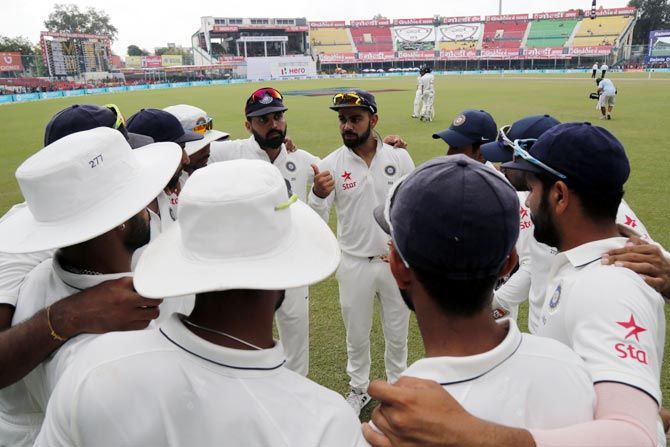
Virat has been a great ambassador for the sport, much like MS, his predecessor as Test captain, had been.
Virat has blossomed to become the key batsman in the side as well as the leader of the Test squad, his transformation has been remarkable. He is aware of his responsibilities as a role model, and has found a happy medium that has allowed him to be his own man.
He is also a role model in the sense that younger players can draw from him in terms of what it takes to be successful across formats.
Virat knows what his strengths are and he plays to his strengths. That, and a sound knowledge of the basics, will ensure that a batsman can succeed in all versions of the game.
You can still play conventional cricket and score quickly even in Twenty20 cricket. That's the message that has come forth from Virat's bat in the last few years, and I am sure youngsters playing the game and aspiring for higher honours will receive that message loud and clear.
It is also important, as we strive to maintain the primacy of Test cricket, to offer incentives to those that perform well in Test cricket.
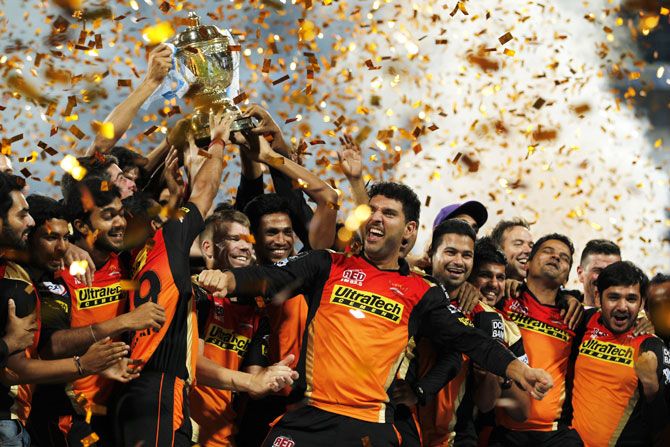
The mushrooming of T20 leagues across the world offers a lucrative option for financial security, therefore if we are to keep the interests of the players intact so far as Test cricket is concerned, we must make sure that good performances in the longest format are well rewarded.
All said and done, it is the Tests that are the engine room of international cricket, so it is our responsibility as stakeholders of the game to ensure that we do everything possible to keep that fire burning.
As I wind down, I can't help but reflect on what a pleasurable ride cricket has been.
At the beginning, while speaking about Mr Sardesai and Jaisimha Sir, I mentioned not taking things for granted, not losing sight of why we all started to play this game.
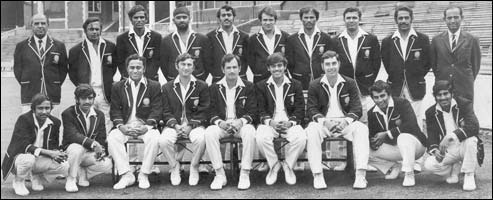
Where cricket stands today is obviously a tribute to the men who administer and market the game and also the true inspirations are those that played this great game before us, who set standards of cricketing and social behaviour, who walked the hard yards uncomplainingly and with a burning spirit that has allowed us to bask in the glory.
Speaking on my behalf, and on behalf of my entire generation of Indian cricketers, I am deeply thankful to our heroes who not merely inspired us to take up the game, but also set standards that we all have aspired to achieve.
Many of them have remained unsung, but in my eyes, they will forever be heroes.
They are the pioneers who dared to dream, and then achieved their dreams too, reiterating that fairytales aren't restricted to story books.
I salute their commitment, their passion, their vision, their spirit.
I shall forever remain indebted to the men who walked the path before me and made it easier and smoother for me to tread on.
Thank you all, for your patience and understanding. I sincerely thank Mrs Nandini Sardesai and her family members for giving me an opportunity to share some details of my journey that I will always be proud of.

